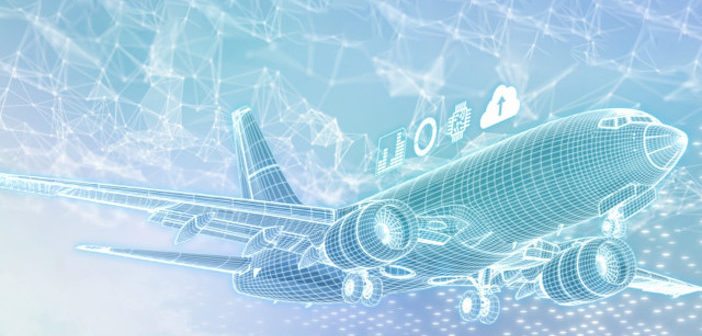The world of electronics for unmanned aerial vehicles (UAVs) has seen tremendous growth and innovation in recent years. As technology advances, these flying machines become smarter, more efficient, and increasingly integral to various industries. Whether you’re a technology enthusiast, a professional in the field, or simply curious about drones, understanding the electronic systems that power them is fascinating.

Importance of Electronics in UAVs
Electronics play a crucial role in the capability and functionality of UAVs. From the power systems that keep them airborne to the communication arrays that allow them to be controlled remotely, these components are vital. As UAVs transition from primarily military applications to commercial and recreational uses, the demand for sophisticated electronics continues to surge.
The Role of Avionics in UAVs
Avionics form the brain of any UAV, encompassing navigation and control systems that guide drones safely through the air. They include tools like GPS, gyroscopes, and accelerometers, which are critical for maintaining stability and direction. For more on modern avionics in aerospace, check this comprehensive guide on avionics.
Power Management Systems
UAVs rely heavily on efficient power management systems to optimize battery life and performance. The need for lightweight yet powerful batteries has driven innovation. Such improvements allow for longer flight times and more powerful onboard systems.
Communication Systems
Effective communication systems are essential for UAVs, ensuring that operators can maintain control over vast distances. These systems employ advanced radio frequencies to enable seamless connectivity between the drone and its controller.
Applications of UAV Electronics
Unmanned aerial vehicles are used in numerous applications today, from agriculture and surveying to entertainment and delivery services. Each application demands unique electronic configurations tailored to specific operational goals.
Surveying and Mapping
In the fields of surveying and mapping, UAVs equipped with precision electronics can gather detailed geographical data quickly and efficiently. Their ability to cover challenging terrain makes them invaluable tools for cartographers and geologists alike.
Agricultural Use
Advanced electronics in UAVs are transforming agriculture, offering farmers detailed insights into crop health, watering patterns, and pest infestations. This technology helps increase yields and reduce resource wastage.
Commercial Deliveries
The rise of drone commercial deliveries illustrates the importance of robust electronics. These UAVs need precise navigation systems and safety features to operate effectively in urban environments.
Future Trends in UAV Electronics
The future of UAV electronics is promising, with research focusing on enhancing flight autonomy, improving payload capacity, and integrating AI systems for real-time decision-making. With advancements in embedded systems, UAVs are expected to become even more adaptable and intelligent. For an in-depth look at this technology, visit embedded system insights.
Lightweight Materials
The continuous quest for lightweight electronics is crucial for enhancing UAV performance. Innovations in materials allow for increased flight endurance and energy efficiency. For insights on this, explore the article on lightweight aerospace electronics.
Thermal Management
Managing heat in sophisticated UAV electronics is vital to ensuring reliability and longevity. Advanced thermal management techniques protect sensitive components from overheating. Learn more about it in our thermal management article.
The Move Towards Autonomy
Autonomous drones represent the cutting-edge of UAV technology, with electronics capable of making complex decisions without human input. This shift promises safer and more efficient operations across various sectors.
Challenges in UAV Electronics
Despite their promising future, UAVs face challenges, particularly in the integration of advanced electronics. Issues such as power consumption, signal interference, and regulatory compliance need to be addressed as the technology evolves.
Regulatory Concerns
The regulation of unmanned aerial vehicles is an ongoing challenge. Countries worldwide are updating their laws to keep pace with technological advancements, ensuring safe and secure skies.
Security Risks
As UAVs become more prevalent, securing their electronic systems from cyber threats is critical. Developing robust security protocols will be essential to protecting sensitive data and systems.
Environmental Impact
Addressing the environmental impact of UAV production and operation is crucial. Innovations geared towards sustainability are becoming increasingly important within the industry.
Conclusion
Overall, the advancement of electronics for unmanned aerial vehicles continues to drive the capabilities of these devices, positively impacting diverse industries. As technology evolves, we can anticipate even more breakthroughs in the UAV sector. For further insights into electronics in aerospace, you can visit this external resource.

FAQs
How are UAVs powered?
UAVs are typically powered by rechargeable batteries, although some advanced models use solar panels or combustion engines for endurance and range improvements.
What is the role of communication in UAVs?
Communication systems in UAVs allow for remote control and data transmission, which are essential for operations over large distances and in complex environments.
How do UAVs navigate?
Navigation in UAVs primarily relies on GPS systems, supported by gyroscopes and accelerometers to maintain stability and ensure accurate flight paths.


